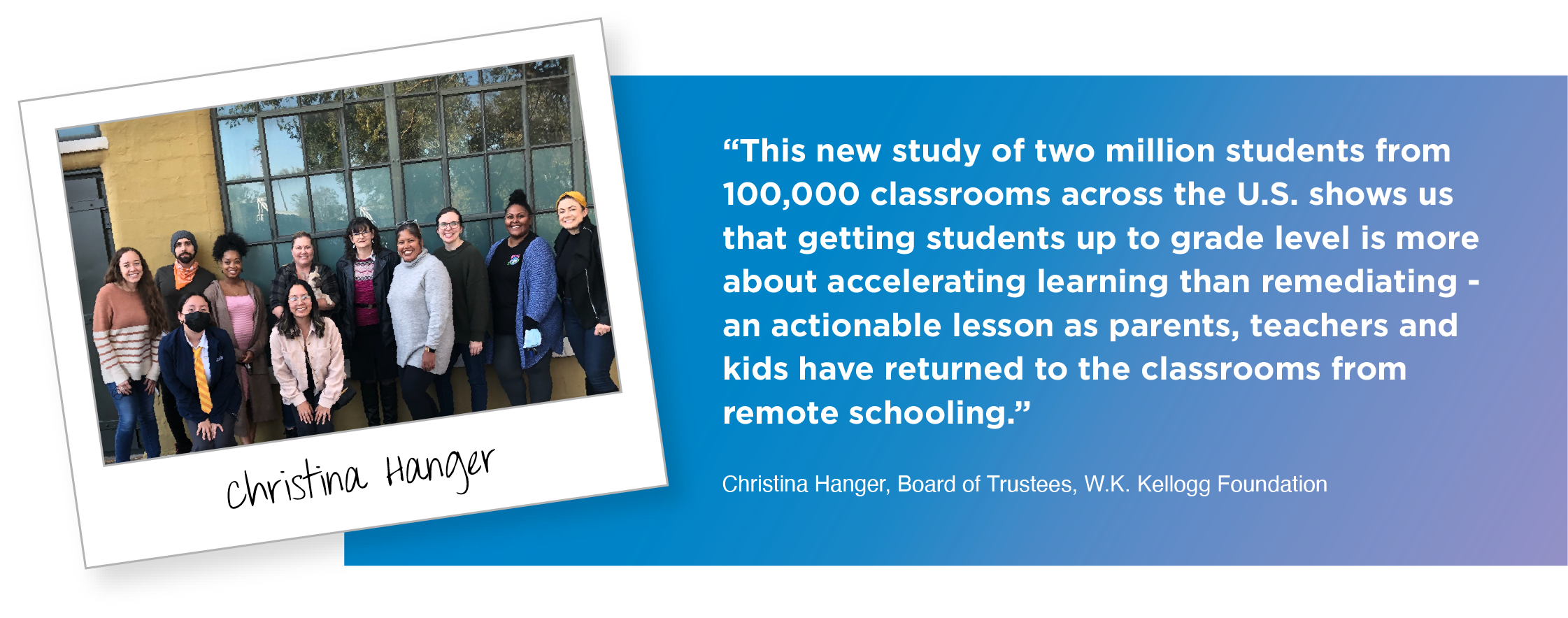This post is also available in: Español (Spanish) Kreyòl (Haitian Creole)


In Brief
During the 2020-2021 school year, TNTP partnered with Zearn, a nonprofit online math learning platform, to study whether elementary school math students received better results with remediation learning or accelerated learning. While remediation focuses on teaching content from the prior grade levels that students may have missed first, accelerated learning uses a “just-in-time” approach that integrates prior-grade concepts into current-grade lessons.
In the TNTP/Zearn study, Accelerate, Don’t Remediate, the accelerated approach was shown to help students learn more and struggle less than traditional remediation techniques, especially if they were children of color or children from lower-income households. Additionally, in classrooms where teachers used the accelerated approach, students completed 27% more grade-level lessons.
In all, 2 million students from 100,000 classrooms nationwide were included in the study — approximately 10% of the total elementary public school enrollment nationwide.
Why This Matters
Children of color and children from lower-income households are more likely to receive remediation learning than their wealthier, White peers, regardless of whether they have already succeeded in prior-grade-level content. This current reality furthers the inequities that have been historically built into education systems. By implementing accelerated learning on a wide scale, teachers and administrators can create more equitable learning experiences and outcomes for students of color and students experiencing poverty.
The Opportunity
In the aftermath of last year’s school shutdowns related to the COVID-19 pandemic, more students than ever before are finding themselves ill-equipped to engage with grade-level content as they re-enter the classroom. School systems are grappling with how to respond: Should they use the traditional approach of reviewing all the content students missed, known as remediation? Or should they start with the current grade’s content and provide “just-in-time” supports when necessary, known as learning acceleration?
The research clearly points to the benefits of acceleration.
State education agencies, districts, schools and teachers have an opportunity to close education gaps by using acceleration teaching strategies, making quality learning accessible to students of color and low-income students. Furthermore, districts and schools have an even greater opportunity to allocate their significant American Rescue Plan dollars—especially those designated to address learning loss—to support accelerated strategies for both in-school and out-of-school learning settings.
Additional resources to consider on this topic:
Change Starts Here – This site charts the transformation of Battle Creek Public Schools.
The Opportunity Myth – TNTP’s report highlighting that students, and especially students of color, routinely don’t get access to grade-level content.






Comments